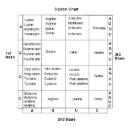Yahoo Answers is shutting down on May 4th, 2021 (Eastern Time) and beginning April 20th, 2021 (Eastern Time) the Yahoo Answers website will be in read-only mode. There will be no changes to other Yahoo properties or services, or your Yahoo account. You can find more information about the Yahoo Answers shutdown and how to download your data on this help page.
Trending News
Are annelids born adults or do they develop into adults?
Can you please give me the following information if possible:
How annelids develop or how the common ones develop such as leeches, earthworms
and what they eat
and if you know about any other common or uncommon annelid state their name
please and thank you!!
2 Answers
- ATP-ManLv 71 decade agoFavorite Answer
Earthworms are hermaphroditic. They contain both male and female reproductive organs in the same body. These animal usually cannot fertilize themselves. Their fertilized eggs develop into trochophore larvae. They develop into a small version of the adult and grow larger without changing form. They eat decaying vegetable matter in the soil.
The three classes of Annelids are: Oligochaeta (earthworms); Polychaeta (sand worms); Hirudinea (leeches). Leeches are parasitic and are used by the medical profession to withdraw blood from humans in certain situations.
- Anonymous5 years ago
B) Haploid Females. This is because the female is basically cloning herself, so that get rid of all the males. To create queen bees, you'll need males to make some more genetically varied offspring so that 1) you won't have confusion between your workers and hers and 2) you have a greater chance of making a better queen with new genes. That leaves us with Diploid and Haploid females. But because there are no introduction of new genes, that means that the female in question would have the same number of genes as a egg (which is haploid to start off with). Thus, that leave us with B.


